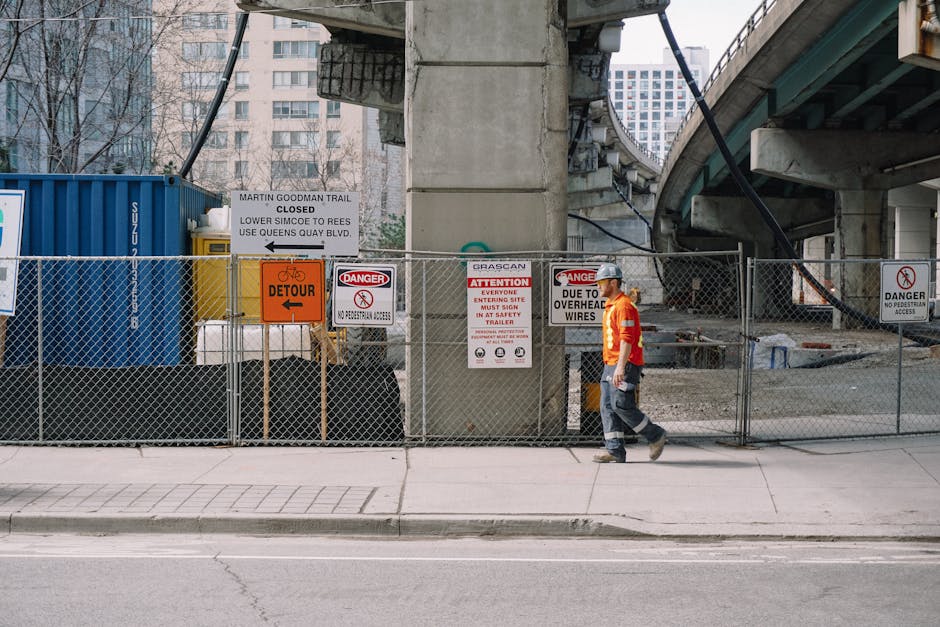The role of cranes in modern construction
Cranes play a crucial role in modern construction projects. They are used to lift and move heavy materials, such as steel beams and concrete, to different parts of a construction site. Without cranes, it would be challenging to build tall structures efficiently. Cranes help speed up the construction process and improve worker safety by reducing the need for manual labor in lifting heavy objects. They also allow for more precision in placing materials, ensuring that the building is constructed accurately according to the design plans. Overall, cranes are an essential piece of equipment that contributes to the success of construction projects.
Importance of crane safety
Crane safety is crucial in modern construction to prevent accidents and protect the lives of workers and bystanders. Proper safety measures not only ensure a smooth workflow but also minimize the risk of injuries and property damage. By adhering to strict safety protocols, construction sites can create a secure environment for everyone involved. Regular training sessions for crane operators and ground personnel can significantly reduce the chances of accidents. Regular inspection of cranes and lifting equipment is essential to identify any potential hazards and address them promptly. Clear communication among the team members is vital to coordinate lifting operations effectively and avoid misunderstandings that could lead to accidents.
Common crane accidents and their impact
Crane accidents, although infrequent, can have severe consequences on construction sites. Here are some common crane accidents and their impact:
- Crane Collapses: When a crane collapses, it can cause significant damage to the building, materials, and potentially harm or even kill workers.
- Load Dropped: If a crane drops its load, it can damage property or injure workers below.
- Boom Failure: Boom failure can lead to the crane dropping its load unexpectedly, posing a serious danger to those nearby.
- Overturning: Crane overturning can result in property damage, injuries, and potential fatalities, impacting the overall project timeline and budget.
Legal regulations for crane safety
Laws require construction companies to follow specific safety rules when using cranes. The Occupational Safety and Health Administration (OSHA) sets guidelines to ensure the safety of workers and the public. These regulations cover areas such as crane operation, maintenance, and inspection. By adhering to these rules, companies can prevent accidents and maintain a secure work environment.
Training requirements for crane operators
To operate a crane in modern construction, crane operators need proper training. This training ensures they can safely handle the equipment and perform their duties efficiently. Operators go through certification programs that teach them how to operate cranes, understand load capacities, and follow safety protocols. Some key training requirements for crane operators include:
- Completing a certified crane operator training program
- Understanding the principles of crane operation
- Learning about different types of cranes and their functions
- Practicing proper load-handling techniques
- Following safety regulations and guidelines consistently
By meeting these training requirements, crane operators can contribute to a safe and productive work environment on construction sites.
Safe operation practices for cranes
The safety of crane operation is crucial in the construction industry. Here are some essential practices to ensure safe crane operations:
- Conduct thorough pre-operational inspections to check for any issues.
- Ensure all crane operators are properly trained and certified.
- Follow recommended load capacities to prevent overloading.
- Use proper rigging techniques to secure loads safely.
- Avoid sudden movements and always move loads smoothly.
- Stay vigilant of overhead hazards and maintain a safe distance from power lines.
Importance of regular equipment maintenance
Regular equipment maintenance is crucial to ensure the safety and efficiency of cranes on construction sites. Here’s why:
- Maintenance helps identify and address any potential issues before they become major problems.
- Proper maintenance can extend the lifespan of the equipment, saving money in the long run.
- Regular checks ensure that all safety features are working correctly, reducing the risk of accidents.
- Maintaining equipment regularly also helps in complying with safety regulations and standards in the construction industry.
Crane safety technologies and innovations
The advancements in crane safety technology have greatly improved construction site safety. Innovations like load moment indicators and anti-collision systems help prevent accidents by providing real-time data and alerts to crane operators. Remote control capabilities allow operators to safely control cranes from a distance, reducing risks. Additionally, technologies such as crane cameras provide better visibility, enhancing safety during lifting operations. These innovations aim to minimize accidents and improve overall construction site safety.
Risk assessment and safety measures on construction sites
Construction sites can be dangerous, so risk assessment and safety measures are crucial for everyone’s well-being. Here are some key points to consider:
• Conduct regular risk assessments to identify potential hazards and take steps to prevent accidents.
• Provide proper safety training for all workers to ensure they understand how to work safely.
• Implement safety measures such as wearing appropriate safety gear and using equipment correctly to reduce the risk of accidents.
• Regularly inspect equipment and machinery to ensure they are in good working condition.
• Have emergency procedures in place in case of accidents or injuries to respond quickly and effectively.
Promoting a culture of safety in construction industries
To promote a culture of safety in construction industries, it is crucial for companies to prioritize safety protocols and implement training programs for all employees. Safety should be everyone’s responsibility, from the workers on the ground to the management team. By emphasizing safety practices, companies can create a work environment where accidents are minimized, and workers can feel secure and valued. Regular safety inspections, hazard assessments, and continuous improvement in safety procedures are essential in fostering a culture of safety within the construction industry.

